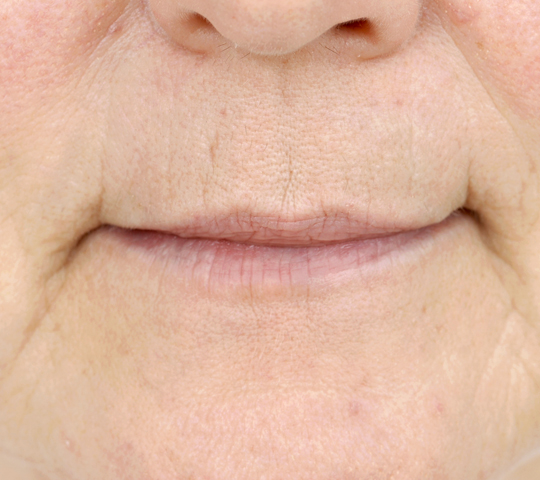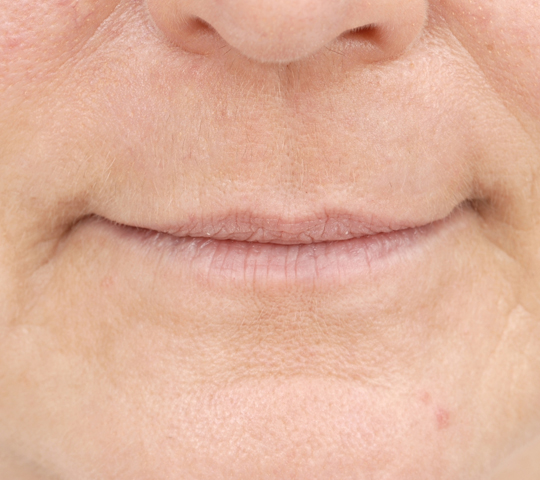Overview
Chemical and laser peels can improve the quality of your skin. They can do this in several ways, such as removing or reducing dark spots, dark circles and irregular pigment, reducing fine lines or enhancing your skin’s natural glow.
Chemical and laser peels work similarly in many ways. They remove the superficial, sun-damaged layer of your skin and replace it with healthy cells.
A chemical peel does this using chemical agents. A laser does this by using heat. The method that’s right for you will depend on a number of factors which are best discussed with your healthcare provider.
Peel strengths differ greatly. You can have a superficial, intermediate or deep peel depending on the skin problem.
The length of recovery depends on the strength of the peel. Superficial peels require minimum down time. Deeper peels (chemical or laser) require a longer recovery.
Why choose us?
Cleveland Clinic Cosmetic & Plastic Surgery Center can help you explore options to rejuvenate or refine your appearance — and your self-confidence. To get the best results from any cosmetic procedure, you need the highest-quality team. You can rely on our experts, who are nationally ranked for their expertise and care.
Learn more about Cleveland Clinic Cosmetic & Plastic Surgery Center.
How to Prepare
Am I a candidate for a chemical (face) peel?
Chemical and laser peels are usually used to make your skin healthier and appear younger by reducing the effects of sun damage. A healthcare provider may also recommend them to reduce the occurrence of superficial growths, skin cancers or acne scars.
Talk to your provider about whether you’re a candidate for a chemical peel or a laser peel, as well as which type of chemical or laser peel is best for you.
Chemical peels are a good option if you have:
- Dark spots or irregularities in the color of your skin.
- Dark circles.
- Fine lines.
- Mild, moderate or advanced facial aging.
- Skin growths or acne scars.
- Specific, but realistic, goals in mind for the improvement of your appearance.
How do I prepare for a chemical (face) peel?
Preparation for your chemical or laser peel at Cleveland Clinic will depend on the type of peel treatment you’re having. Your healthcare provider may recommend Retin-A®, a prescription medication derived from vitamin A, to pre-treat the skin. This regularizes your skin’s surface layer, allowing a TCA (trichloroacetic acid) peel, phenol solution or laser to penetrate more deeply and evenly. If your skin won’t tolerate pre-treatment with Retin-A, you may use AHA (alpha hydroxy acid) or retinol cream instead.
Hydroquinone, a bleaching agent, is sometimes used in combination with Retin-A or an AHA pre-treatment, especially if you have blotchy skin areas or pigmentation problems. This type of pre-treatment may take a month or more before your provider will schedule your actual peel.
If you’re having a phenol or deeper TCA peel, you’ll need to arrange for someone to drive you home. You may have local anesthesia with sedation for deeper chemical or laser peels. In fact, chemical peels are often done under local anesthesia with sedation.
Preparation for your chemical peel may also include:
- Skin preparation with Retin-A .
- Retinol, hydroquinone or vitamin C several weeks before the peel.
What to Expect
How is a chemical (face) peel performed?
Chemical peels at Cleveland Clinic Cosmetic & Plastic Surgery Center are generally outpatient procedures, so you’ll usually go home the same day. Our aestheticians typically perform superficial peels — such as AHA, salicylic acid and other lunchtime peels — which require no down time. Procedures last around 30 minutes. Deeper, full-face chemical (TCA or phenol-croton oil) or laser (fractionated CO2) peels take 45 minutes to an hour. Smaller portions of your face, or partial phenol or laser peels, are also frequently done and take a very short period of time.
Your skin is thoroughly cleansed with an agent to remove excess oils. Your eyes are protected. Superficial peels — such as glycolic acid, AHA and salicylic acid — require no local anesthesia and are applied to your skin.
During the procedure, you may experience a warm sensation for five to 10 minutes, followed by a stinging sensation. Cool compresses or a fan will alleviate the discomfort. You’ll have a topical pain reliever painted on your face, local anesthesia or local anesthesia with sedation for deeper chemical or laser peels.
What are the different types of chemical or laser peels?
Alpha hydroxy acids (AHAs) or superficial peels
These types of peels include glycolic, lactic or fruit acids. They’re the mildest of the peel formulas and produce light peels. Aesthetic skin care specialists perform these types of peels, which can provide smoother, brighter-looking skin. They’re the best option if you can’t spare the time to recover from a phenol or TCA peel.
AHA peels may treat fine wrinkling, areas of dryness, uneven pigmentation and acne. You may receive various concentrations of an AHA peel once a week or at longer intervals to obtain the best result. You can also mix an alpha hydroxy acid, such as glycolic acid, with a facial wash or cream in weaker concentrations as part of a daily skin-care regimen to improve your skin’s texture.
Trichloroacetic acid (TCA) peel, blue peel or medium peel
These peels can be used in many concentrations, but they’re most commonly used for medium-depth peeling to treat fine surface wrinkles, superficial blemishes and pigment problems.
The blue peel is a TCA peel with an added blue coloring to help determine the depth of the peel. TCA peels can be performed using 15%, 20% or 30% concentration. The results of a TCA peel are usually less dramatic than a phenol peel and not as long-lasting, and it may require more than one TCA peel to achieve your desired result. Recovery time from a TCA peel is usually shorter than that of a phenol peel.
Phenol peel or deep peel
Phenol peel, also known as phenol-croton oil, can be a superficial, intermediate or deep peel depending on the degree of facial aging or facial wrinkling. Superficial wrinkling or skin discoloration requires only superficial treatment, while deeper wrinkles require deeper treatment and a longer recovery.
Phenol peels can treat your whole face or part of your face. A frequent application treats the wrinkles around your mouth, often at the time of facelift surgery.
Phenol peeling will require local anesthesia for a partial peel (small areas), while you’ll need local anesthesia with sedation for a full face treatment. People who undergo TCA and phenol peels are prescribed anti-herpes medication prior to surgery to prevent a herpes outbreak after the procedure.
Fractionated CO2 laser treatment
CO2 laser treatment, like TCA and phenol peel, is a very effective means of treating facial aging, including irregularities in pigment, dark circles, fine lines and mild to moderate skin laxity. Like TCA and phenol peels, you can either have your entire face treated or partial facial treatment. You’ll need topical or local anesthesia, and down time is similar to that of intermediate depth peeling, TCA or phenol peels. Your healthcare provider will decide whether laser peeling or chemical peeling is best for you. There’s downtime with both laser and phenol peeling of one or two weeks.
Results
What results can I expect?
The results of your chemical peel depend on the type of chemical peel treatment:
- AHA (superficial) peels make improvements to your skin that may be very subtle at first. You may notice a healthier glow to your skin, and with continued treatments, you’ll notice a general improvement in your skin’s texture.
- TCA and phenol peels require downtime. The amount of downtime depends on how deeply or aggressively the peel is performed. Deeper peels remove more wrinkles but require more recovery. You and your provider will decide the depth of the peel before the procedure. Generally, recovery time is one to two weeks (depending on peel depth).
- CO2 laser treatment also leads to significant improvement in skin quality, wrinkles and skin tightening. Recovery is similar to that of TCA and phenol peeling.
Following up with an expert at Cleveland Clinic Cosmetic & Plastic Surgery Center is the best way to ensure long-lasting results from your chemical peel. View our chemical peel before-and-after photos to see results from actual patients.
What is involved in recovery?
Just as your results may vary, recovery from chemical or laser peels depends on the type of chemical peel treatment.
- AHA (superficial) peels cause some temporary skin flaking or scaling, redness and dryness. However, these conditions will disappear as your skin adjusts to treatment.
- Phenol (intermediate to deep) or TCA (medium) peels may cause tingling or throbbing. You may be prescribed a mild pain medication to relieve these symptoms. If your care team used tape to cover your face, it’ll be removed a day or two after treatment. It’s normal for a crust or scab to form on the treated area. To help your face heal properly, it’s important that you follow your provider’s specific postoperative instructions.
- TCA (medium) peels may also cause significant swelling, depending on the strength of the peel. A TCA peel may cause your face to become quite swollen and your eyes may even be swollen shut temporarily. You’ll need someone to help care for you for a day or two following your treatment. You may also be limited to a liquid diet and advised to limit talking during the first few days of recovery.
Is chemical (face) peel safe?
All surgeries and procedures carry some risks. In general, the deeper the peel, the greater the risk of side effects and complications. Possible side effects and complications from a chemical peel include:
- Prolonged redness.
- Lightening or darkening of your skin (darkening of your skin is generally temporary and treated with Retin-A and hydroquinone).
- Infection (taking an antiviral, such as Zovirax® or Valtrex®, two days before the peel reduces the likelihood of herpes infection).
- Scarring (this side effect is a rare complication and generally occurs because of a peel that was too deep).
Insurance & Financing
Insurance rarely covers the cost of elective cosmetic surgery and procedures.
Please call 216.444.4004 and ask to speak with one of our financial representatives who can explain payment options, including CareCredit financing.














